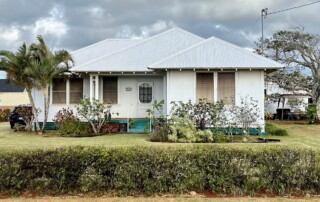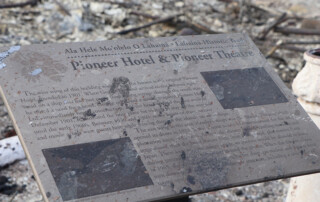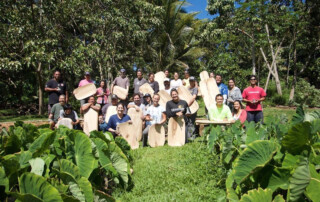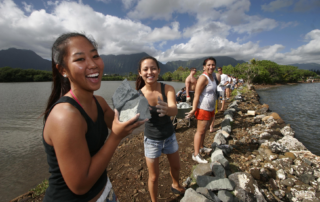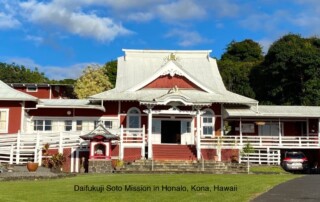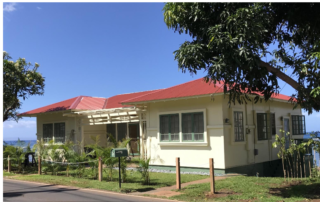Comfort Station Reopened, Heiau Signage Being Installed at Pōka‘ī Bay
Historically significant Kū‘īlioloa Heiau located in the park’s Kāne‘īlio Point Re-published from the City and County of Honolulu Staff Reporter, Nate Serota. Following completion of renovations to security features and bathroom fixtures within the Pōka‘ī Bay Beach Park comfort station, the highly-utilized facility is now open to the public. The comfort station was closed at the end of February 2023 for the initial security improvement project. Completion of this project was delayed due to supply issues, and was followed by specialized maintenance staff with the Honolulu Department of Parks and Recreation (DPR) renovating the inside of the bathrooms by: installing new fixtures, building new stall doors, masonry work to raise the height of the bathroom stalls, painting the floors, and providing the base coats for the community mural with paint donated by the Wai‘anae Moku Kūpuna Council. Once that work was finished, community members from the Council and Pu‘u Honua O Wai‘anae began repainting the murals adorning the bathroom’s interior. On the women’s side, flowers and birds (such as the ‘iwa and ‘ua‘u) will adorn the walls, while on the men’s side Maui’s hook and various island fish will be painted. The murals are expected to be completed in early September. In addition, in mid-August DPR began installation of signage indicating the site of the historically significant Kū‘īlioloa Heiau, located in Kāne‘īlio Point on the ‘Ewa-side of the nearly 15.5-acre beach park. The signage follows a long-standing community request and passing of Resolution 22-191, introduced by Councilmember Andria Tupola. This legislation affirms the name of the heiau, and requested the appropriate signage to indicate the cultural significance of the heiau, while encourage those visiting the site to respect the sacred location. Complementing this signage [...]



